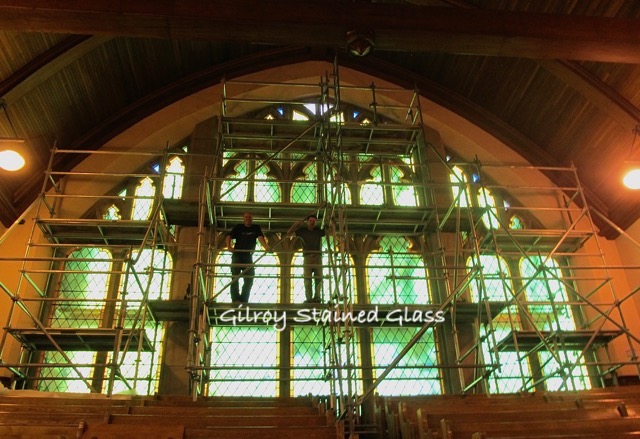The methodology of stained glass is the same as was used in medieval times, each step a work of art in itself. John and Laura create multiple artworks in various media before the glass work even begins.
Gilroy Stained Glass remains perfectly true to the “handmade ethos” of centuries-old practices. Designing, drawing, cutting the glass, painting, all by hand.
The first stage in this carefully thought out process, is to capture their vision for a commission. The design is created using water colour as it is the closest representation of the translucent quality of glass.
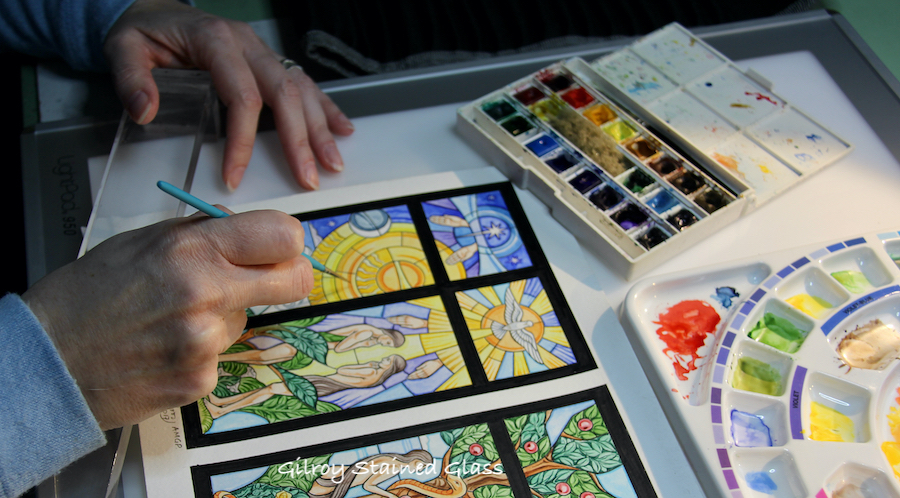
On approval of the design, a full size drawing is created, known as a cartoon. This drawing determines the precise imagery that will be painted onto the glass.
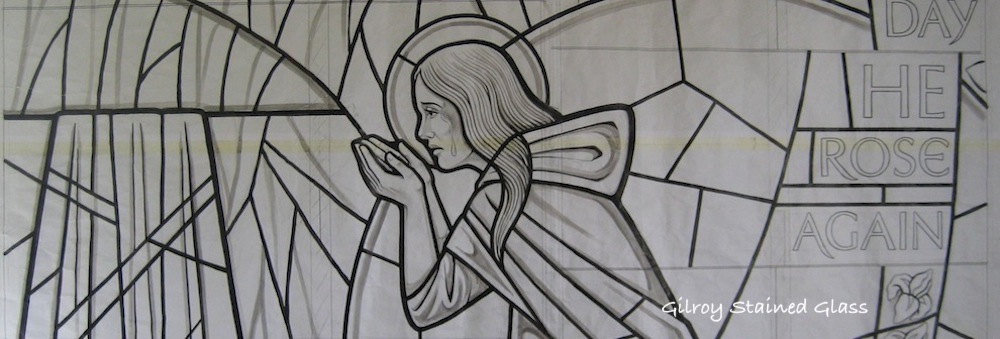
A structural drawing known as the cutline is made from the cartoon, it contains information for the fabrication of the window, such as width of lead cames to be used and positioning of support bars. The cutline determines the exact shapes of the glass.
Each piece of glass is carefully selected with reference to the design for type and colour. A tungsten tipped oil filled wheel cutter is used to cut the glass to shape over the cutline keeping the score mark just inside the pen line, which represents the heart of the lead came. When the glass selection and cutting is completed all of the pieces are then laid on a light table or placed on an easel to double check if they are working together as envisaged.

Painting technique and depth of tone and shape are carefully considered to optimize the jewel like quality of mouth blown glass. There are several stages of applying paint to the glass, which combine to gradually build up the tonal values of the image. The colour always comes from the glass itself, the application of painted line and tonal values influences how the light is viewed through that colour.
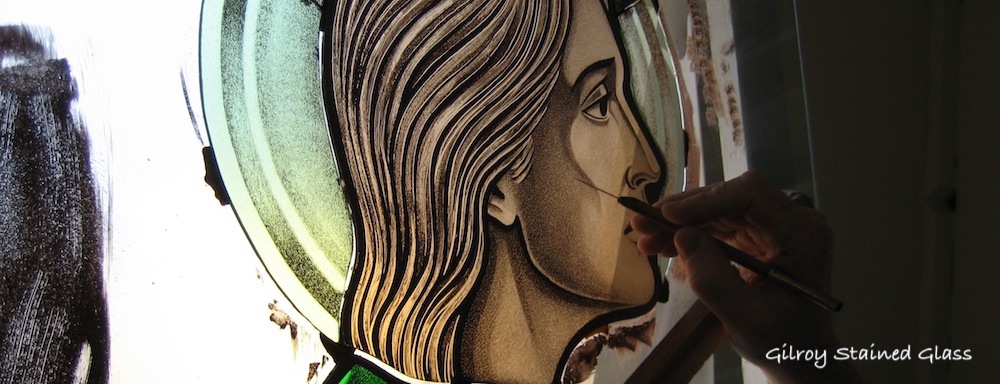
The next stage is assembling all the individual pieces of glass together using “H” section lead cames and soldering the joints. The window is waterproofed and strengthened by brushing a specialized “cement”, an oil based putty, into the spaces between the flanges of the leads and the glass.
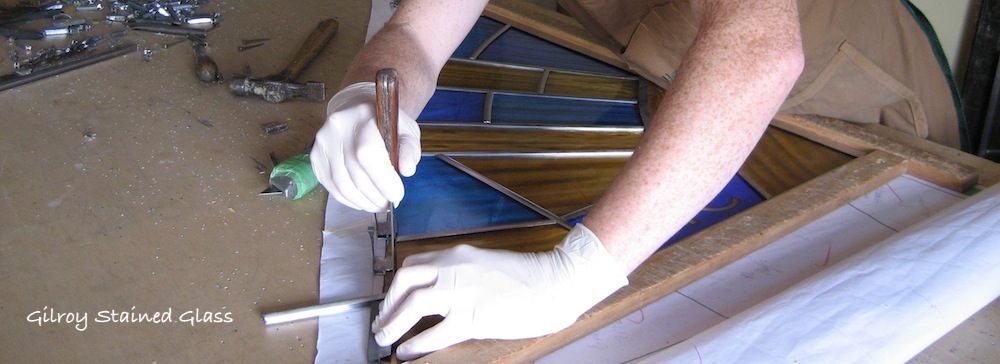
When John and Laura are satisfied that the window is exactly right, it is installed in position. This can range from fitting into wooden or aluminum frames to stonework that is centuries old.
